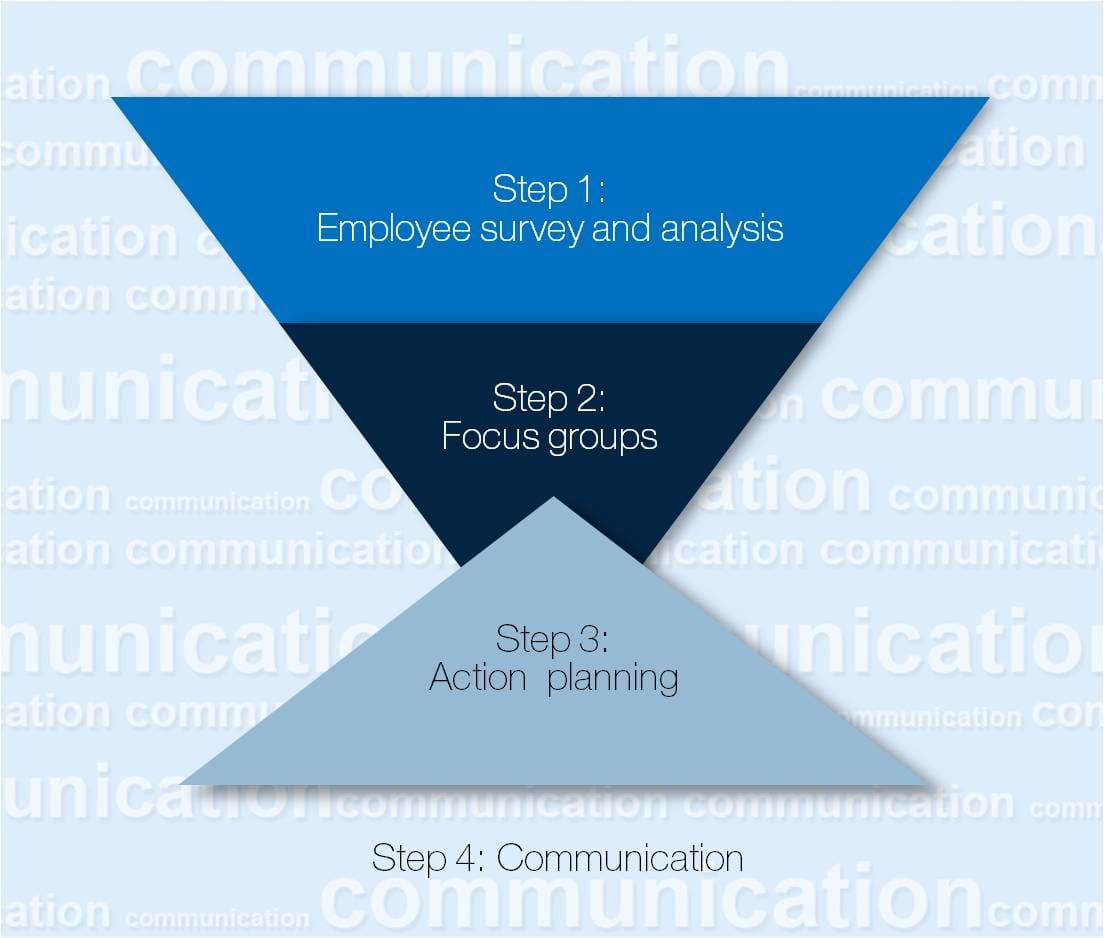Want to create a better place to work?
Talk to us today to uncover insights to help increase your employee engagement
Benchmarking board performance: 500 board reviews later
Unlock evidence-based insights into board performanceOrganisations often make employee engagement a HR responsibility; HR are expected to collect, interpret and communicate engagement initiatives in isolation. However, in our experience, high performance organisations actively involve all employees in a four step engagement process to ensure buy-in and ownership of actions across all levels of the organisation.


Employee engagement surveys are a great way of asking employees targeted questions to identify what is and what is not working within an organisation. These surveys can reach multiple employees across different levels, departments and geographic locations in a cost effective and timely manner. The resulting data can then be used in a variety of ways and provides a quantitative measure for future comparison.
Ideally, a survey should:
Focus groups are useful to narrow the focus of survey data and engage employees in finding solutions. They are usually made up of carefully selected employees, not including senior leaders, and should be communicated as such to ensure employees who are not invited understand why. The decision on how many groups are run will depend on the types of questions that the organisation wishes to drill down on. Some might address questions that have a whole of organisation focus and thereby require a cross section of employees, while others might focus on particular issues that are sensitive to one department or geographic location only.
The pure nature of group interaction means that properly facilitated discussion will stimulate the memories, experiences and ideas in participants. To be truly robust, focus groups should therefore foster an environment that encourages open and candid feedback. This can be achieved by:
High performance organisations ensure it is the leadership team, not just HR, who owns engagement. These organisations use action planning workshops to seek leaders’ buy-in and endorsement of resulting actions. Properly structured action planning workshops facilitate discussion and actionable outcomes by:
The three steps outlined above will only be successful if supported by targeted organisational communications along the improvement journey. Employees should be:
Those organisations who have conducted all of these four steps will generally have a greater employee engagement and buy-in to the resulting actions and future surveys than those that have not.
Talk to us today to uncover insights to help increase your employee engagement
Many organisations across the globe are implementing cultural change programs to become more customer centric (discussed in our article The 6 essential ingredients ...
Many organisations approach an employee engagement survey as a "tick the box" exercise and are surprised and disappointed with their employees' lack of interest and ...
A link between having engaged employees and increased customer loyalty and satisfaction has been established.
Employee engagement has a number of implications for an organisation's profitability.
We use cookies to enhance your experience. Further use is considered consent. You can read more about cookies in our Privacy Policy.


You’ll always get a real person when you contact Insync.
Let's get started